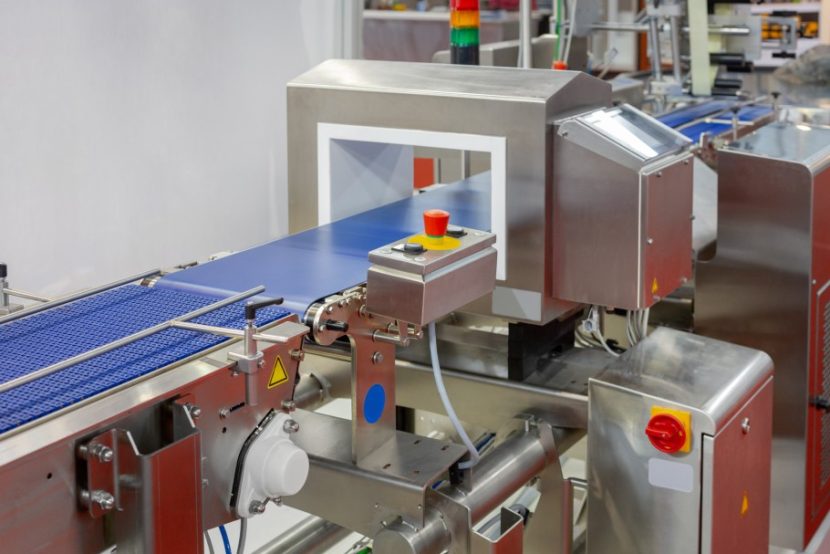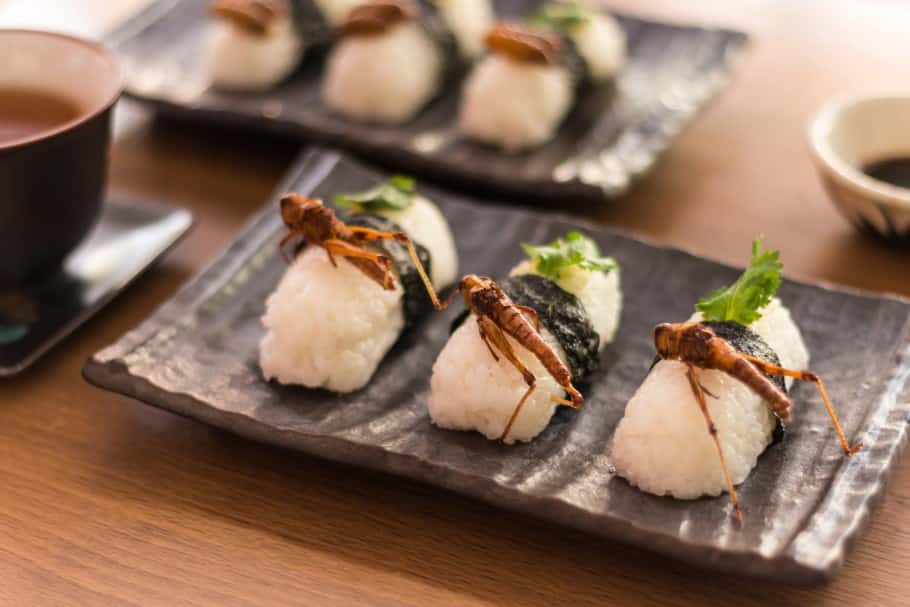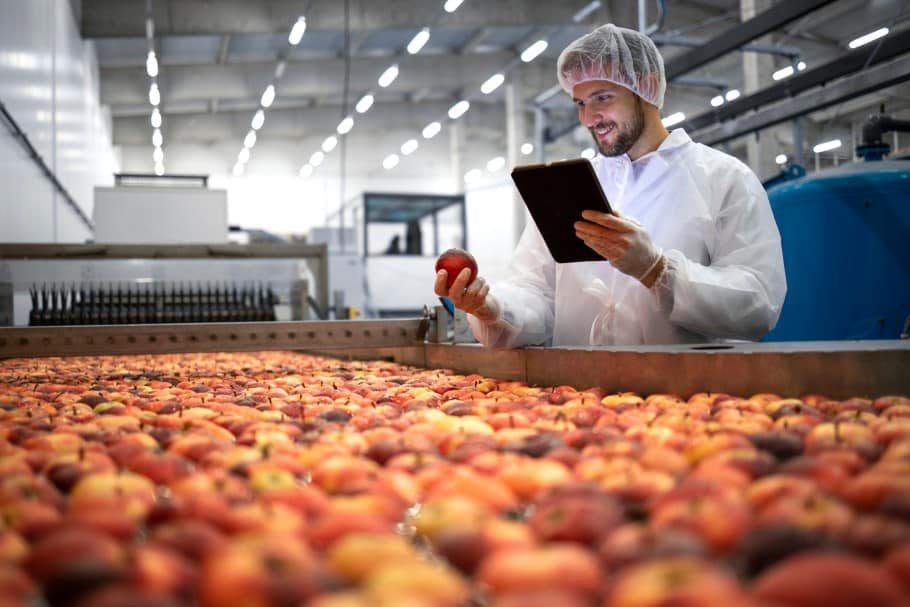Artificial Intelligence (AI) Helps Reduce Risk of Foreign Materials
By Andrea Tolu
The presence of foreign materials in food is relatively less frequent compared to other types of adulteration. According to the recalls database of the Canadian Food Inspection Agency, between 2015 and 2021 there were 317 recalls or alerts due to extraneous matter, compared to 845 due to microbial contamination. What makes this type of contamination particularly insidious, however, is the high health risk it poses to consumers, and the great variety of ways it can happen.
Contaminating materials could include: pieces of metal, glass, plastic, rubber, or wood coming from broken equipment or tools from the manufacturers’ facility or a supplier’s; stones or other objects collected from the field together with produce (in 2019, a crisp factory in Hong Kong found a hand grenade from WWI in a potato shipment from France); unwanted parts of the food itself, such as fragments of shells, stalks, or olive pits.
“Even to this day foreign material detection is not a perfect science, and we still see food adulterated with rocks and sticks and pieces of plastic making its way into the marketplace,” says Brandon Hernandez, co-founder and owner of Whole Brain Consulting.
To minimize risks, food manufacturers have a wide choice of technology at their disposal. Downstream, they can use metal detectors, magnets, X-rays, and optical sorters, while at an earlier stage, they can put raw materials through sieves, filters, and water baths to remove as much extraneous matter as possible before the processing step.
What foreign object prevention technology to choose and at what point of the production line to place it, will vary depending on the product, the production process, and the type of equipment.
The importance of risk assessment
The first step to make sense of all these variables is risk assessment. “The most probable sources of contamination will depend, for example, on how many transitions there are, how long the line is, and the type of inputs. If there are a lot of hand inputs, contamination could come from gloves or broken pieces of scrapers and scoops. As you get more automated it could be caused by worn out bearings, or shavings from metal-on-metal contact,” says Hernandez.
An important part of assessing risk is to know the ins and outs of every piece of equipment involved in food processing, even the newest one. “Factory acceptance of new equipment requires particular attention,” continues Hernandez: “It has to be a team effort. The maintenance team will do its best to have equipment that is 100% viable, but it’s really up to the QA team to pull the panels off and thoroughly review all the nooks and crannies with a strong flashlight, so they can really get a sense of what and where contamination can come from and how to address it.”
Another level of consideration is related to the product itself: “You need to look at the properties of the product and its origin. The risk of foreign object contamination of a manufactured ingredient and an agricultural product can be very different,” says Hamid Rehal, SQF lead auditor and food safety consultant.
Setting up the right configuration
Based on risk assessment, it’s then possible to plan the most effective combination of foreign object detection and removal equipment. Certain types of technology will be more common than others. One piece of equipment likely to be found in all facilities are metal detectors: “Most companies choose to install a metal detector because it’s relatively inexpensive, easy to maintain, and protects against a very high-risk type of foreign object contamination material,” says Rehal. “X-rays are less common, although they’re definitely becoming more popular in food facilities, thanks to the wide range of foreign objects they can detect, such as glass or plastic.”
The rest of the configuration, however, will be different depending on the manufacturer and the product. For a producer of frozen potato chips, for example, upstream removal will be particularly important.
“When you take materials directly from the field, they will go through a wash step in a basin or a high-pressure washer, where you remove as much foreign contamination as possible. Throughout processing, the best choices for foreign material detection would be magnets or a metal detector. X-ray may not be necessary because after a thorough washing step, the likelihood of still having plastics and wood will depend on the risk coming from inside the plant,” says Hernandez.
In the case of a non-solid food, like plain yogurt, the approach will be similar, but different formulations will have an impact on risk too: “Oftentimes yogurt is produced in closed systems with lot of filtration at the raw material step, which will pull objects out prior to being mixed,” says Hernandez. “But if I’m adding fruit pieces to it, I’ll need to evaluate whether those bits are the same size as the material that I’m trying to detect. If they are, I can’t really put it through another filter or x-ray, so the best option would be to use a metal detector prior to shipping because the likelihood of false positives for contaminants would be high.”
The game changer
Foreign object detection equipment for the food industry is a mix of mature technology like metal detectors and magnets, and more recent technology that is still evolving, like x-rays. The game changer in the coming years, Hernandez believes, will be AI: “AI technology is going to start to make its way into food manufacturing, and the next most logical place to put it is in the foreign material detection environment. In a few years’ time it will be possible to intentionally feed a machine with foreign objects outside the production line so that it can start to learn what it is and how to recognize it. Also, we’re going to see more intelligent equipment that can not only learn but adapt to its environment.”
The use of AI with X-rays is one of the most promising developments of foreign object detection technology,” says Max Uusitalo, Director of Business Development at Mekitec, a manufacturer of quality control X-ray systems for the food and beverage industry. “Thanks to increased processing power and data storage, we can develop algorithms that teach X-ray systems to recognize not only density but also patterns and shapes. This will allow them to integrate in smart factories, increasing the quality and productivity of the whole plant.”
About the Author:
Andrea Tolu is a freelance writer and ghostwriter who works with companies and thought leaders in the food industry. Other than food safety, he writes regularly about food regulations, ingredients, and alternative proteins.

-
 FeaturedRisk management
The Cost of a Breach: What a Cyberattack Could Mean for Food Safety Recalls
FeaturedRisk management
The Cost of a Breach: What a Cyberattack Could Mean for Food Safety Recalls
-
 FeaturedRisk management
Securing the Food Chain: How ISO/IEC 27001 Strengthens Cybersecurity
FeaturedRisk management
Securing the Food Chain: How ISO/IEC 27001 Strengthens Cybersecurity
-
 FeaturedRisk management
Revolutionizing Food Safety Training: Breaking Out of the “Check-the-Box” Mentality
FeaturedRisk management
Revolutionizing Food Safety Training: Breaking Out of the “Check-the-Box” Mentality
-
 GFSI Standards
GFSI 2025: Building Trust, Tech-Forward Solutions, and Global Unity in Food Safety
GFSI Standards
GFSI 2025: Building Trust, Tech-Forward Solutions, and Global Unity in Food Safety
-
 FeaturedFood Safety
Integrated Pest Management: Strategies to Protect Your Brand’s Reputation
FeaturedFood Safety
Integrated Pest Management: Strategies to Protect Your Brand’s Reputation
-
 FeaturedFood Safety Culture & Training
No Open Door Policy: Challenges That Impact Pest Control in Food Processing Plants
FeaturedFood Safety Culture & Training
No Open Door Policy: Challenges That Impact Pest Control in Food Processing Plants




